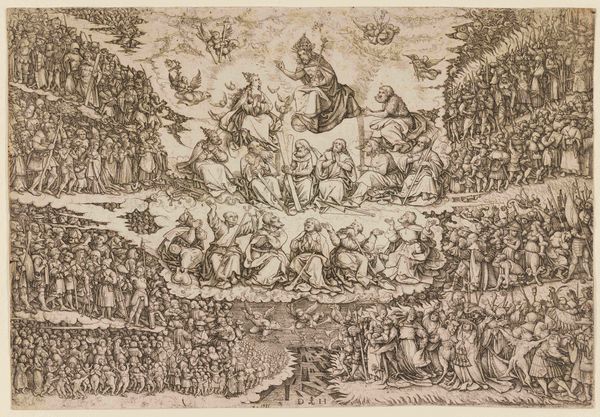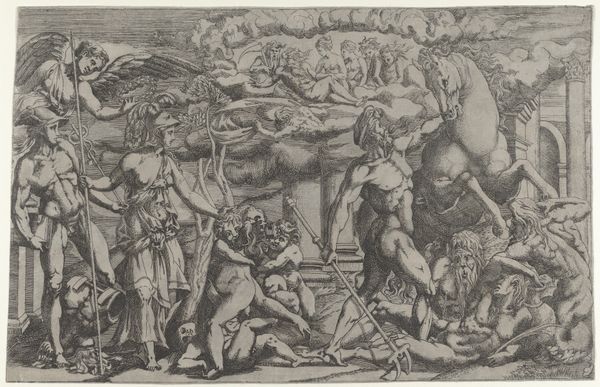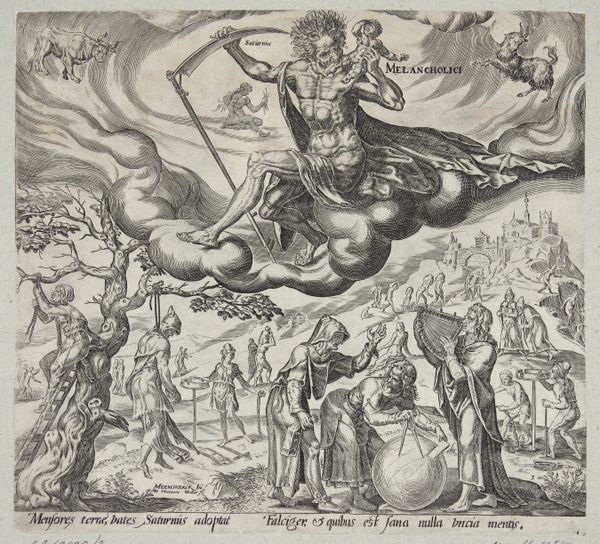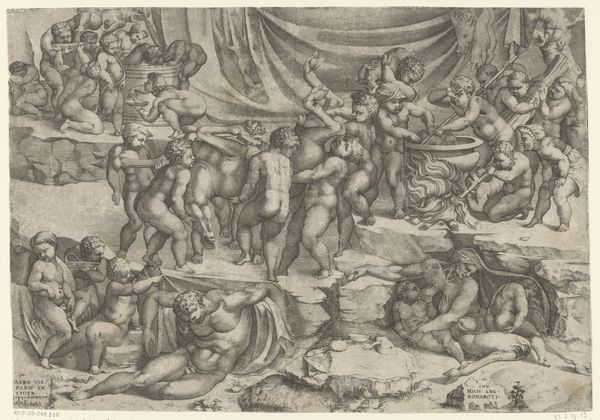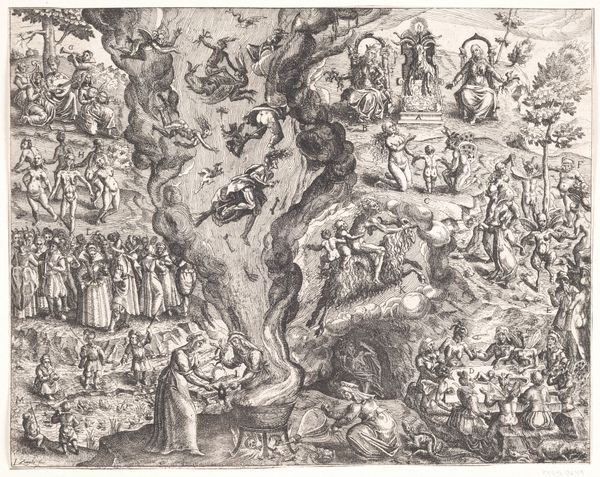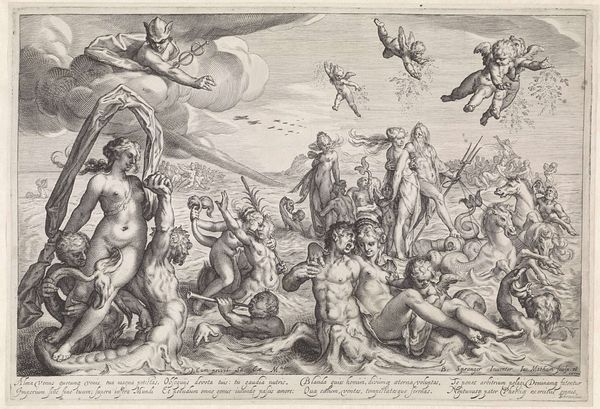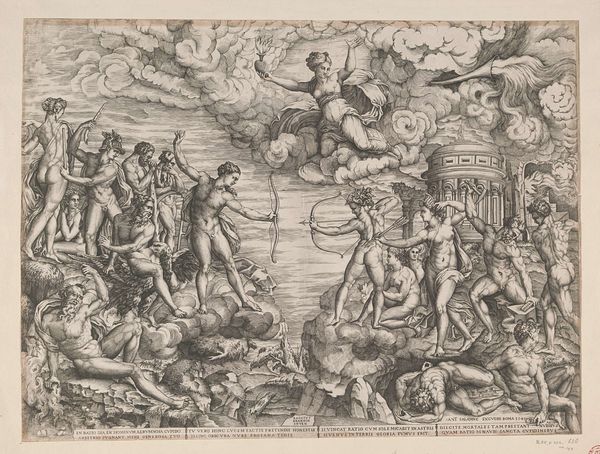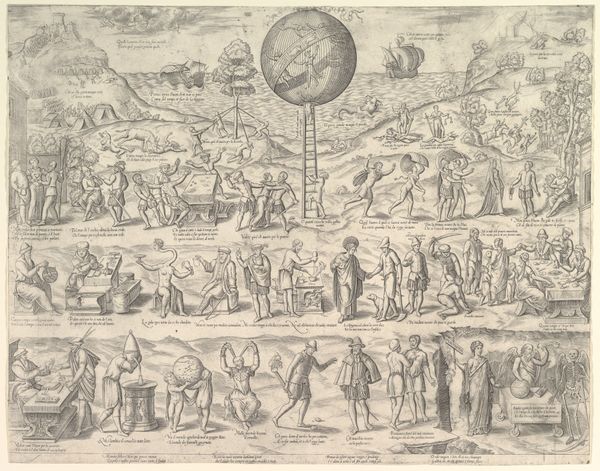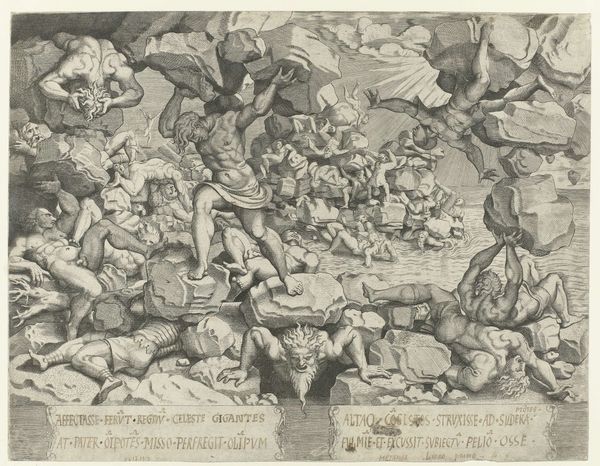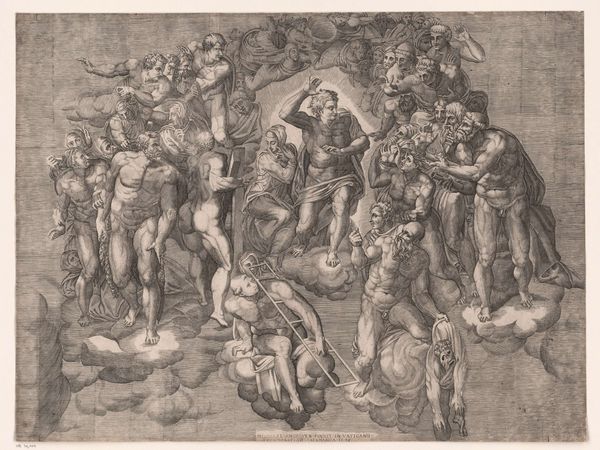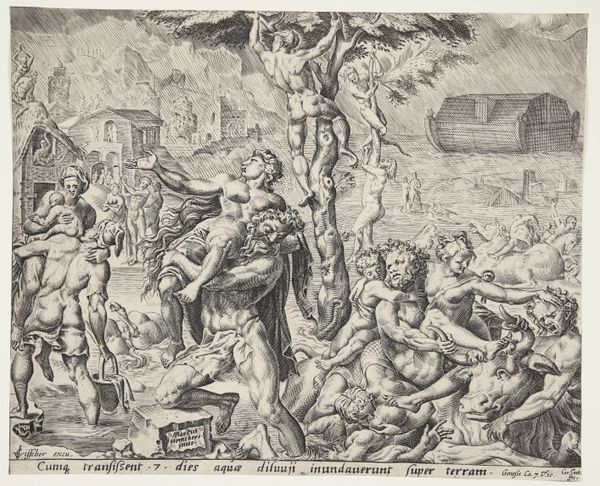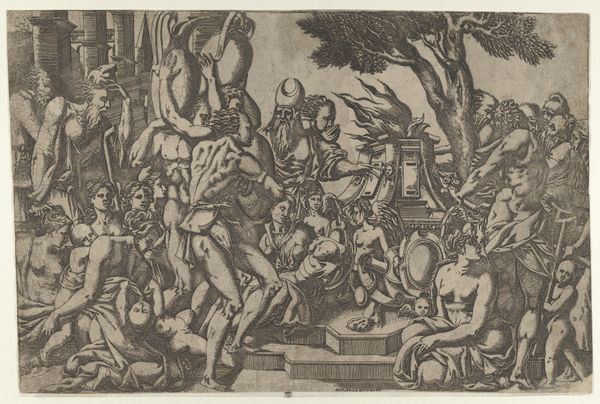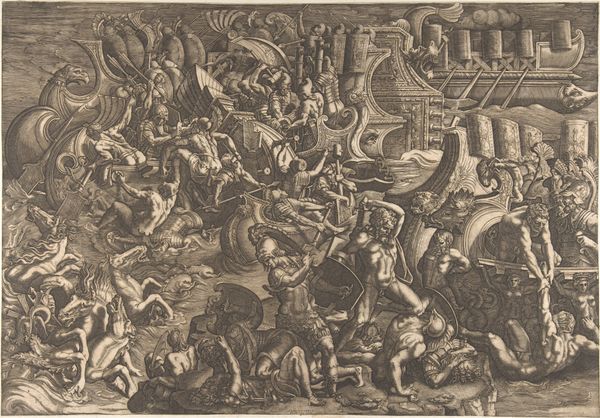
drawing, print, ink
#
drawing
#
allegory
# print
#
mannerism
#
figuration
#
11_renaissance
#
ink
#
cross
#
history-painting
#
nude
#
angel
#
christ
Dimensions: Left plate: 16 7/8 x 11 7/16 in. (42.8 x 29 cm) Right plate: 16 15/16 x 11 7/16 in. (43 x 29 cm) Combined sheet: 21 x 26 3/4 in. (53.3 x 68 cm)
Copyright: Public Domain
Curator: Cornelis Bos created this Mannerist print titled, "The Last Judgement," sometime between 1543 and 1553. It depicts a scene of divine reckoning, with Christ presiding over throngs of nude figures amidst swirling clouds. What’s your initial take? Editor: Claustrophobic! The sheer density of figures, all rendered in such stark detail with ink, creates this overwhelming sense of drama and, honestly, dread. Curator: It speaks to the anxieties of the period, doesn’t it? The Reformation, the questioning of religious authority. This isn’t just a theological statement, but a reflection of societal upheaval and the very real fears surrounding salvation and damnation. Note how the figures are individualized—their emotions ranging from hope to utter despair. The print invites contemplation on the personal and collective consequences of actions, prompting self-reflection on moral and spiritual standing within the rigid social structure. Editor: The printing process itself interests me. Each of these intricate lines was painstakingly etched, likely with the help of apprentices whose labor contributed directly to the accessibility and reach of these religious allegories. Imagine the impact this affordable medium had in spreading these images and ideas far and wide during the Renaissance. What's more, the materiality of the ink on paper creates an interesting paradox between permanence and fragility. This durable image intended for broad consumption exists as a transient object— vulnerable to the inevitable effects of handling and time. Curator: Indeed. Bos leverages the graphic nature of printmaking to amplify the didactic message, manipulating the viewer through carefully constructed symbols and narratives. Angels and crosses represent hope and faith while tormented bodies exemplify divine retribution. The artist uses these recognizable, if densely arranged, iconographic symbols to navigate complicated questions about redemption, divine justice, and human morality. It almost resembles propaganda! Editor: And in a way, it is propaganda! Bos uses a reproductive technique to amplify this particular perspective, underscoring how material production inherently carries the artist's own ideology. Examining the craft— the tools used to make these lines— reveal this dynamic exchange between material means, labor, and ideological message. Curator: Absolutely. This piece reminds us how art is never made in a vacuum. Understanding it requires interrogating historical and ideological implications. Editor: For me, seeing art necessitates looking at production— to realize that labor, material, and availability are always embedded in a piece, often mirroring its deeper social context.
Comments
No comments
Be the first to comment and join the conversation on the ultimate creative platform.
